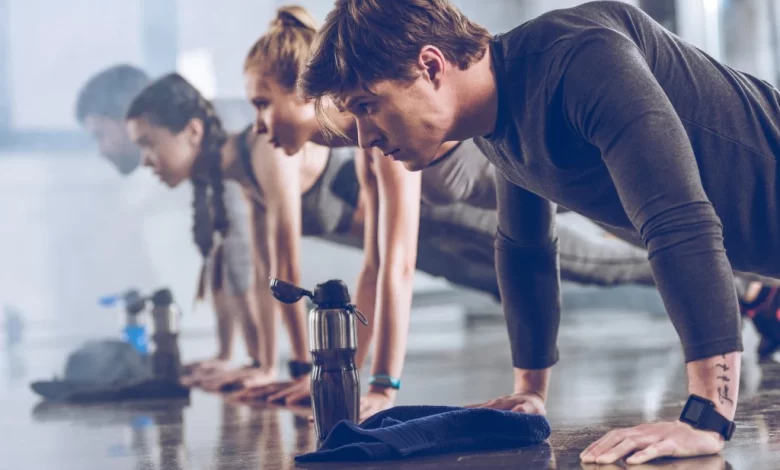How Compression Fabric Can Enhance Your Workout Performance

The tight material of compression clothing, such as high compression socks and waist trainers, helps to enhance your workout performance by increasing blood flow during exercise. This increased circulation can help you work out longer and harder and reduce muscle soreness after your workout. Compression fabric has decreased muscle damage and creatine kinase levels, speeding up recovery after an intense workout.
Increased Blood Flow
To perform at your best, your body needs healthy blood flow. Wearing compression clothing during workouts helps improve blood flow to your muscles, which provides more oxygen for better performance. The breathable compression fabric enables you to shed sweat, eliminating friction against your skin and preventing chaffing. This allows you to work out longer and push yourself harder, helping you reach your fitness goals. Studies show that wearing tight spandex-like clothes increases your blood flow by as much as 40% during exercise and 30% during recovery, which results in more oxygen being delivered to your targeted muscle groups for improved performance. The more oxygen in your muscles, the more powerful and energetic they will feel.
Additionally, compression gear helps reduce vibrations in your muscles. This can help reduce lactic acid buildup, making you feel less tired as your workout progresses. This translates into being able to do more reps or sets with greater intensity, and it also means less pain and soreness after your workout. It is important to recover properly during competitive periods and intense training regimes to avoid injury and prepare for the next session. This is why many athletes use foam rolling, massages and cold water immersion therapy, among other techniques, to accelerate their recovery.
Reduced Muscle Soreness
Muscles are typically sore after a workout because they require time to recover from cellular damage caused by exercise. Compression garments can help reduce muscle soreness after a workout by stimulating blood flow, leading to quicker recovery. This can be helpful for athletes who want to work out more often or for longer periods without burning out. The extra support provided by compression garments can also help reduce chafing during a workout. The materials used in compression apparel are also breathable, so they can pull sweat away from the body and allow it to dry quickly. Another way that compression clothing can help reduce muscle soreness is by reducing vibration in the muscles and joints. This can prevent micro-trauma, which can cause a buildup of lactic acid in the muscles, resulting in post-workout muscle soreness. There are a wide variety of options for compression clothing, depending on your needs and the type of workout you plan to do. You can choose from shirts and full-body compression outfits to sleeves that only cover a specific area of the leg or arm. Depending on your workout’s intensity, you can also choose from different compression levels. For instance, if you’re going for a long run or hike, consider choosing higher-level compression to improve circulation and boost your performance.
Increased Stamina
The tight fit of compression garments forces blood to a specific area, helping muscles function more efficiently. This is why many professional athletes wear compression sleeves, shirts and shorts. But it’s not just the pros who benefit from this gear — amateurs and hobbyists can reap its benefits, too. In addition to providing support, compression garments wick sweat away from your skin, keeping you dry and comfortable. This allows you to exercise longer and can prevent chaffing, which makes it uncomfortable to keep moving. When choosing compression garments, be sure to choose one that’s the right size and offers the level of compression you need for your workout. If too much pressure is applied, it can hurt your performance and may even cause injury. Ensure that the garment feels snug but remains stretchy when trying it on. Following the manufacturer’s sizing chart is important to get the best results. Compression garments have gained traction among professional and amateur athletes over the last three decades. Despite this, their ergogenic effects are still largely unknown. The most promising indications so far are that they can reduce the negative effects of exercise on muscle function and help accelerate recovery in the hours and days after a workout.
Reduced Injury
When you wear compression, your muscles experience less impact force from the ground or other objects that may cause injury. This is because the fabric helps your muscles absorb the shock by keeping your bones in place. This reduces the muscle’s energy to transfer and enables you to train longer without hurting yourself. Compression fabric can also help to decrease the lactic acid buildup in your muscles. This is because it helps your muscles get the oxygen needed for the workout. Without enough oxygen, your muscles will start to fatigue and experience pain. By increasing the rate at which your muscles receive oxygen, you can prevent this from happening and improve your performance during your workouts. There has been a significant increase in research on the effects of compression garments on exercise and recovery. Although the results from these studies are often conflicting and inconsistent, it appears that they have a positive impact on several factors, including joint awareness, local blood flow, waste product removal, altering sub-maximal oxygen usage during exercise (running economy), reducing swelling, and decreasing post-exercise muscle soreness. It is unlikely that they will have a detrimental effect on performance. However, due to the potentially ergogenic impact of compression garments and the potential for participant belief to influence outcomes, future research should seek to quantify the effect of these devices in a greater range of environmental conditions, assess the amount of pressure exerted by the compression garment, and investigate whether or not different types of fabrics or levels of compression have a differential impact on performance.





